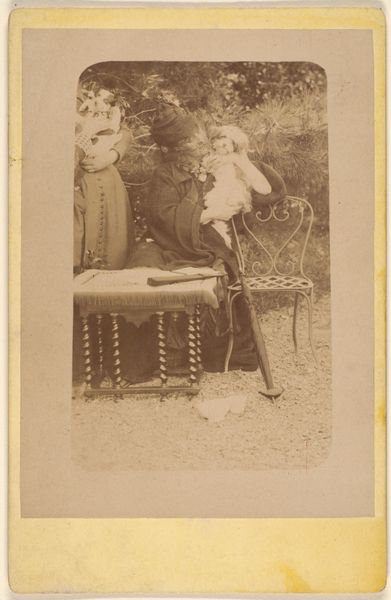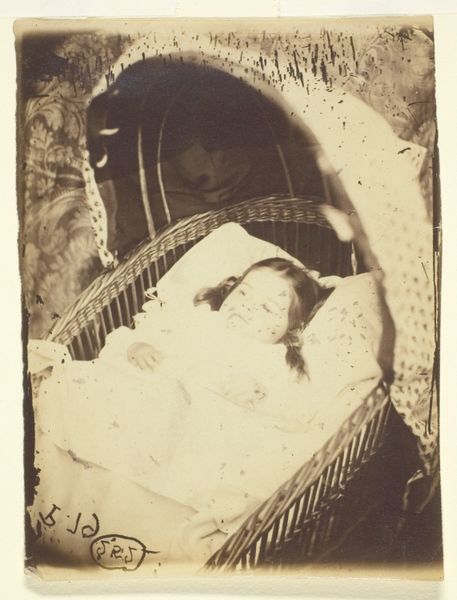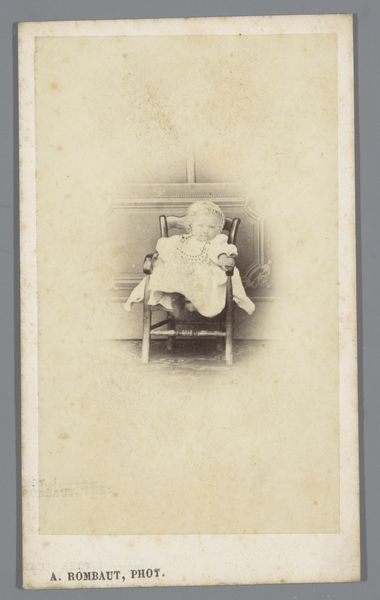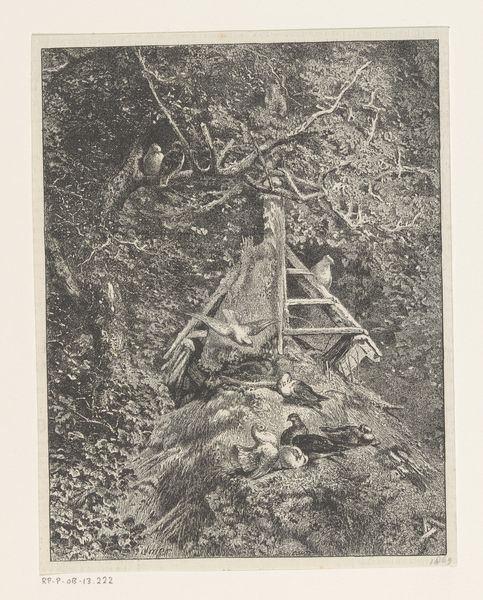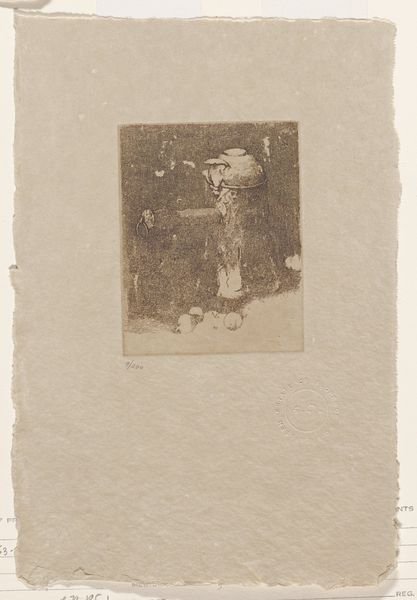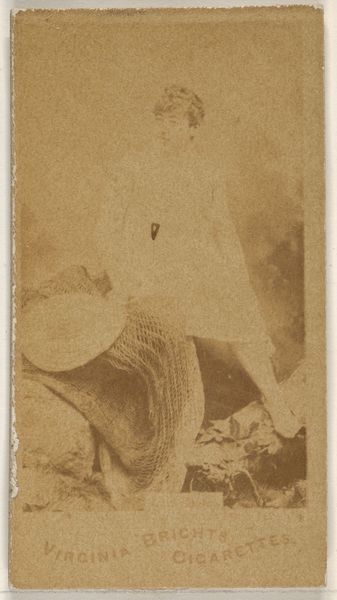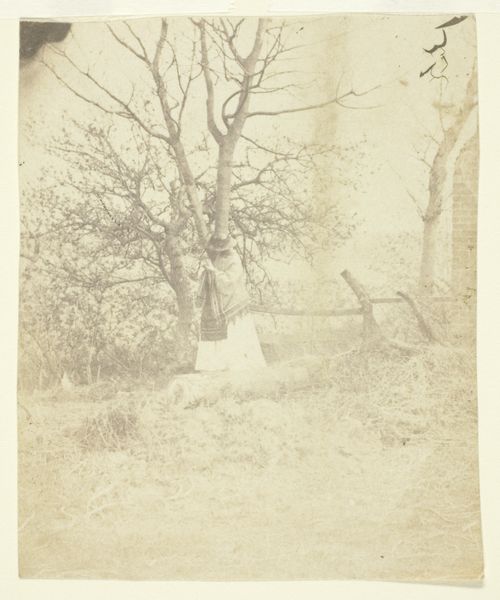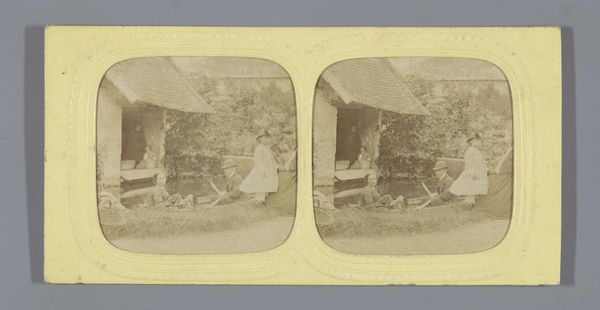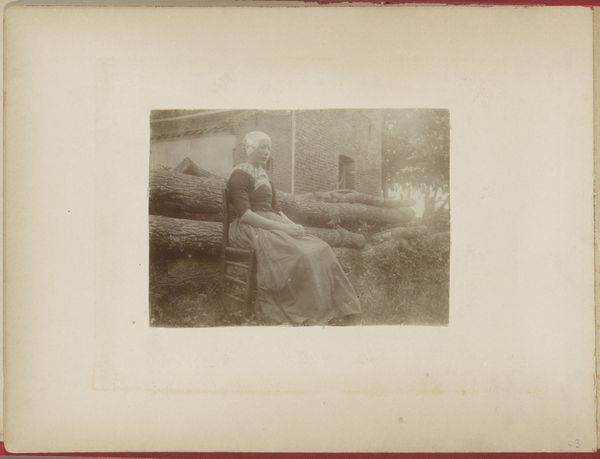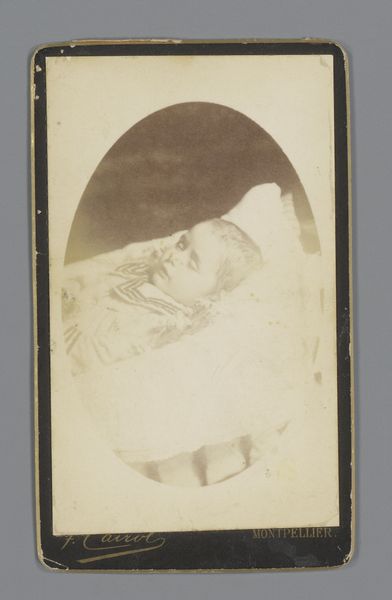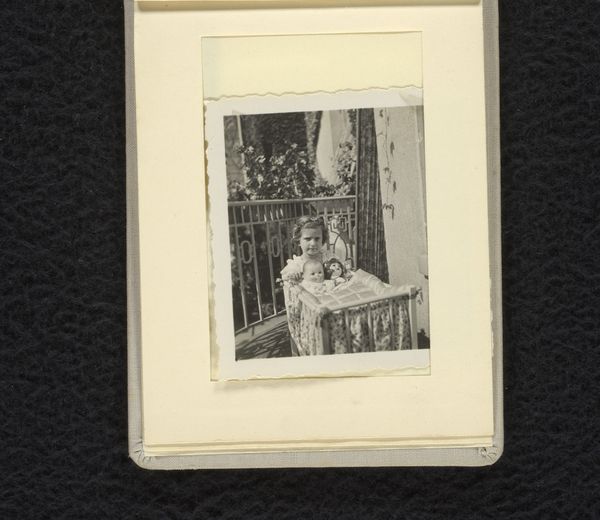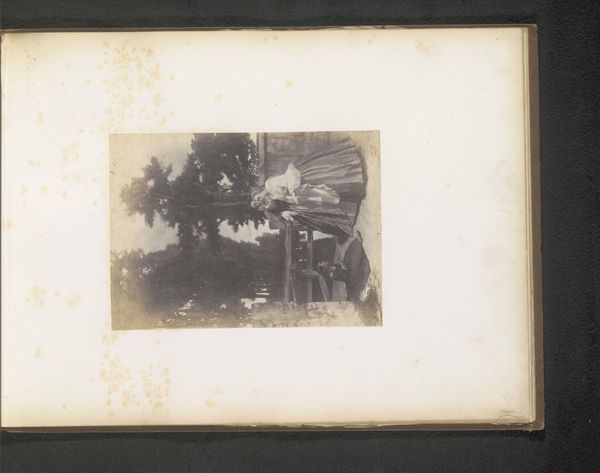
Dimensions: height 105 mm, width 63 mm
Copyright: Rijks Museum: Open Domain
Curator: This photograph, taken sometime between 1900 and 1914 by John George Kirby, is titled "Portret van een onbekende baby in rieten stoel in een tuin," or, "Portrait of an unknown baby in a wicker chair in a garden." Editor: It’s instantly evocative, isn't it? There’s a real softness to it, a kind of dreamy domesticity, even with the limitations of the photographic technology of the time. Curator: Indeed. Note the composition. The wicker chair, almost like a throne, dominates the foreground. The baby, though small, is centrally positioned. Kirby utilizes the background foliage to create depth and an interesting contrast with the geometric pattern of the chair. Editor: It certainly captures a specific social milieu, a time of burgeoning industrialism but a clinging to ideals of domestic tranquility and childhood innocence. I’m immediately drawn to the figure standing behind the chair and to think about questions of agency in relationship to photographic portraiture of infants at the turn of the century. Was that child a sibling? Who determined this composition? Curator: The photographer’s choice of sepia tones further contributes to the image's texture. The tones enhance the texture of the wicker, creating a tactile sensation for the viewer. And what’s fascinating is the very visible emulsion flaws and imperfections across the image. It’s hard to believe it’s striving for hyperrealism; rather, the picture plane is disrupted through this indexical grounding in material fact. Editor: Right. That’s what's arresting – how this ostensibly charming image hints at the larger apparatuses at work shaping it, in ways still relevant today. A single photograph becomes emblematic of larger power structures. Curator: I agree. On the surface, it’s an innocent genre scene. But through careful observation, we discover complexities. Editor: Ultimately, Kirby's image functions on multiple registers – a poignant glimpse into the past and a mirror reflecting our present moment. Curator: Precisely. A beautiful and compelling image.
Comments
No comments
Be the first to comment and join the conversation on the ultimate creative platform.
